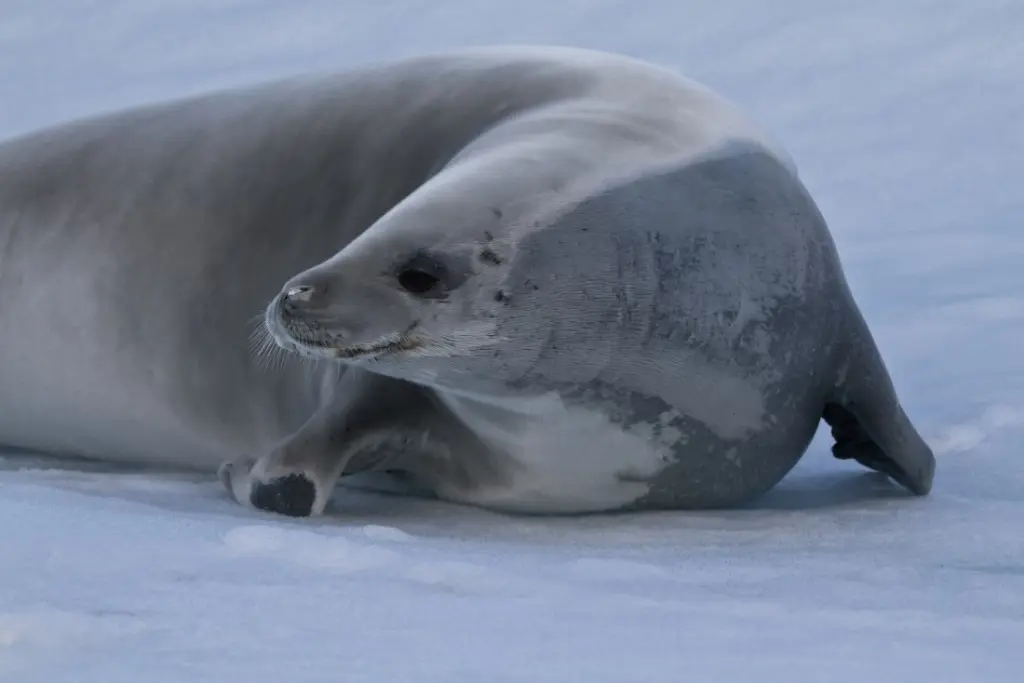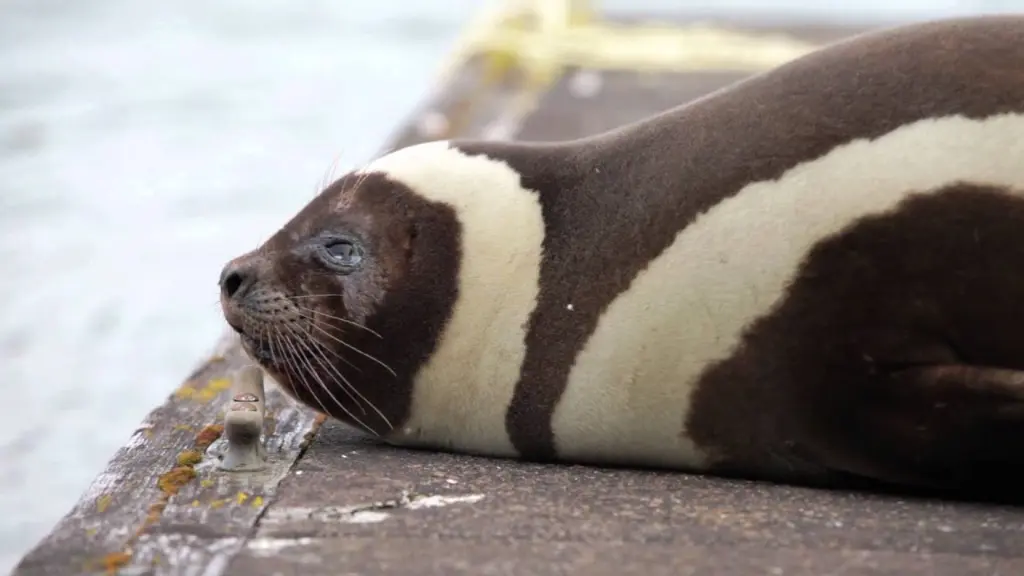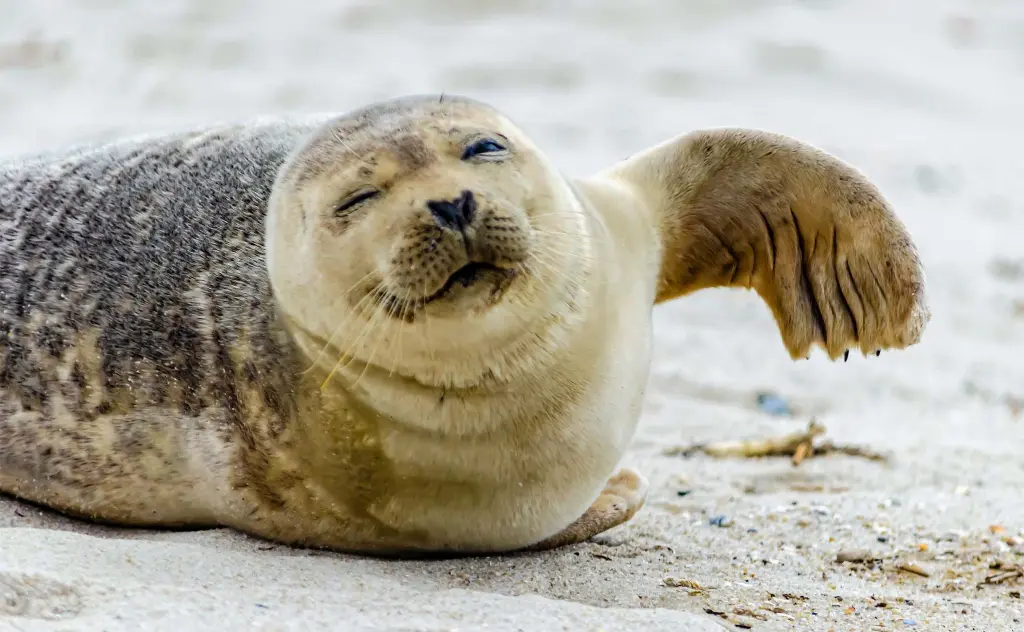Have you ever heard of a seal that primarily eats krill, not crabs? Meet the Crabeater Seal! Scientifically known as Lobodon carcinophaga, this fascinating creature is the most abundant seal species on Earth. Let’s explore everything you need to know about this unique animal, from its surprising diet to its vital role in the Antarctic ecosystem.
What’s in a Name? Unveiling the “Crabeater” Misnomer
First things first: the name “Crabeater Seal” is a bit misleading. Despite the name, these seals do not primarily eat crabs. Their diet mainly consists of Antarctic krill, tiny crustaceans that swarm in the Southern Ocean. The name likely originated from early explorers observing them in areas where crabs were also present, leading to the assumption that crabs were their main food source. But the truth is, krill makes up the vast majority of their diet!
Why Krill? An Abundant Food Source
The Antarctic waters are teeming with krill, making it a readily available and abundant food source for Crabeater Seals. They have evolved specialized teeth, called lobate teeth (hence the genus name Lobodon, meaning “lobe-toothed”), that act like a sieve, allowing them to filter krill from the water. This unique adaptation enables them to efficiently feed on these tiny creatures.

Appearance and Physical Characteristics: Built for the Antarctic
Crabeater seals are well-adapted to the harsh Antarctic environment. They are slender seals, typically measuring between 8 and 9 feet (2.4 to 2.7 meters) in length and weighing between 440 and 660 pounds (200 to 300 kilograms). Here’s a closer look at their physical features:
- Coloration: They have a distinctive coat color that varies with age and time of year. Pups are born with a brownish-gray fur, which gradually fades to a pale cream or silvery-white as they mature. During the summer months, their fur can appear yellowish due to staining from iron oxides in the water.
- Slender Body: Their streamlined body shape allows for efficient swimming and diving.
- Powerful Flippers: They have strong foreflippers for propulsion in the water and hind flippers for steering.
- Lobate Teeth: As mentioned earlier, their unique teeth are crucial for filter-feeding on krill.
Habitat and Distribution: Antarctic Specialists
Crabeater Seals are found exclusively in the Antarctic region. They inhabit the pack ice surrounding the continent, venturing onto the ice floes to rest, breed, and molt. Their distribution is closely linked to the availability of sea ice, which serves as their primary habitat. They are the most abundant seal species in the world, with an estimated population of several million individuals.
Adaptations to Icy Environments
Living in the Antarctic requires special adaptations. Crabeater Seals possess several key features that allow them to thrive in this frigid environment:
- Thick Blubber Layer: A thick layer of blubber provides insulation, helping them maintain their body temperature in the freezing waters.
- Countercurrent Heat Exchange: Their circulatory system uses a countercurrent heat exchange system to minimize heat loss in their flippers and extremities.
- Tolerance to Cold: They have a high tolerance to cold temperatures, allowing them to spend extended periods in the icy water.
Behavior and Social Structure: Mostly Solitary Creatures
Crabeater Seals are generally considered to be solitary animals, although they may gather in small groups on ice floes, especially during the breeding season. Unlike some other seal species, they don’t form large colonies or exhibit complex social structures.
Breeding Season and Pup Rearing
The breeding season for Crabeater Seals typically occurs during the Antarctic spring and summer (September to January). Females give birth to a single pup on the ice. The pups are nursed for a period of about three to four weeks, during which time they grow rapidly on their mother’s rich milk. After weaning, the pups begin to hunt for krill on their own.
Hunting Techniques: Krill Specialists
Crabeater seals are skilled hunters, using their lobate teeth to efficiently filter krill from the water. They typically forage in shallow waters, swimming with their mouths open to capture krill. They can also dive to deeper depths to find krill swarms. The exact hunting strategies can vary based on location and krill density.
Threats and Conservation Status: Adapting to a Changing World
While Crabeater Seals are currently listed as “Least Concern” by the International Union for Conservation of Nature (IUCN), they face a number of potential threats, primarily related to climate change and its impact on the Antarctic environment.
Climate Change and Sea Ice Loss
One of the biggest threats to Crabeater Seals is the loss of sea ice due to climate change. Sea ice is essential for their breeding, molting, and resting. As the Antarctic warms and sea ice declines, their habitat is shrinking, potentially impacting their population size and distribution.
Krill Fishing
Krill fishing is another potential threat. Krill is a vital food source not only for Crabeater Seals but also for many other Antarctic species, including whales, penguins, and seabirds. Overfishing of krill could deplete their food supply and negatively affect the entire Antarctic ecosystem.
Predation
Crabeater Seals are preyed upon by Leopard Seals and Orcas (Killer Whales). Leopard Seals, in particular, are known to be significant predators of young Crabeater Seals. Scars from Leopard Seal attacks are common on adult Crabeater Seals.
The Importance of Lobodon: A Keystone Species in the Antarctic Ecosystem
Crabeater Seals play a crucial role in the Antarctic ecosystem. As the most abundant seal species, they are a major consumer of krill, helping to regulate krill populations. They also serve as a food source for Leopard Seals and Orcas, contributing to the food web dynamics of the region.
Monitoring and Research: Protecting the Future of Lobodon
Scientists are actively monitoring Crabeater Seal populations and studying their behavior, diet, and habitat use to better understand the impacts of climate change and other threats. Research efforts are essential for developing effective conservation strategies to protect these fascinating creatures and the Antarctic ecosystem as a whole.
Fun Facts About Crabeater Seals: A Few More Interesting Tidbits
Here are a few more fun facts about Crabeater Seals:
- They can hold their breath for up to 20 minutes.
- They can swim at speeds of up to 15 miles per hour.
- They are known to slap the water with their flippers, possibly as a form of communication.
- They are one of the most abundant large mammals on Earth.
Conclusion: Appreciating the Amazing Crabeater Seal
The Crabeater Seal, or Lobodon carcinophaga, is a remarkable animal that is perfectly adapted to the harsh Antarctic environment. Despite its name, it primarily eats krill, not crabs, using its specialized teeth to filter these tiny crustaceans from the water. While they are currently abundant, they face threats from climate change and krill fishing. Understanding and protecting these important creatures is crucial for maintaining the health and balance of the entire Antarctic ecosystem. Let’s work together to ensure that future generations can continue to marvel at the amazing Crabeater Seal!




